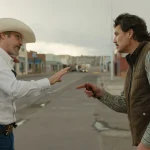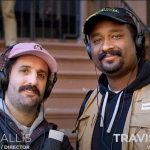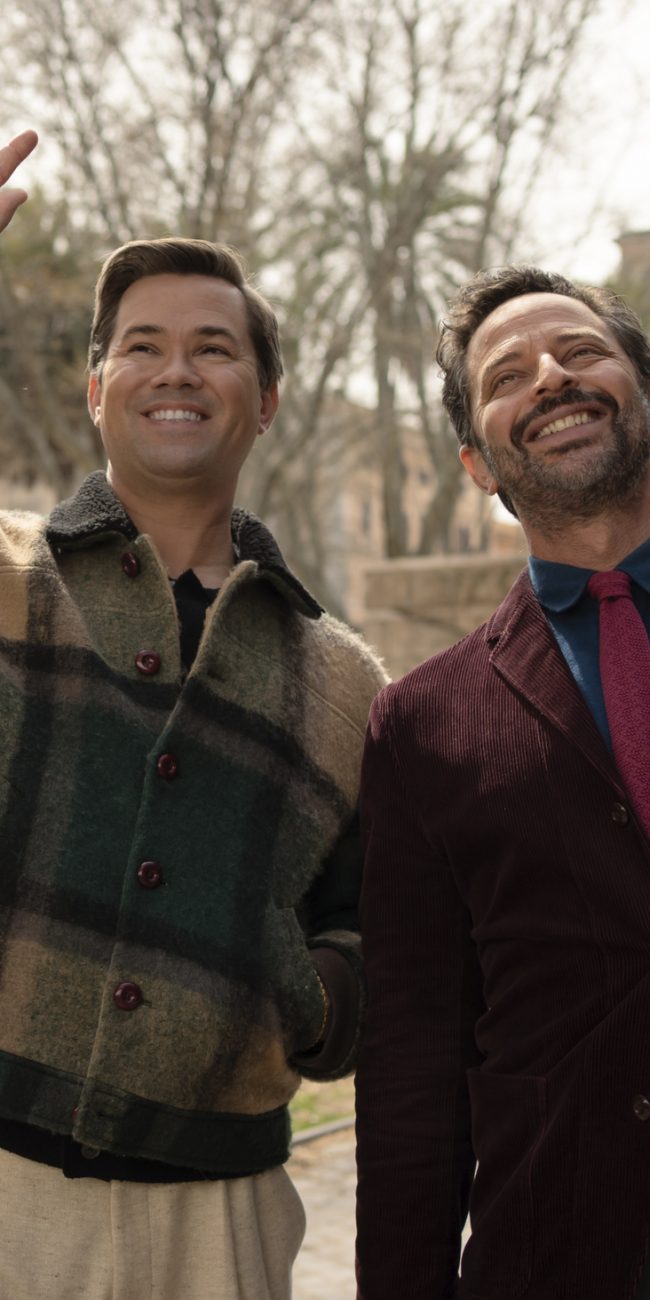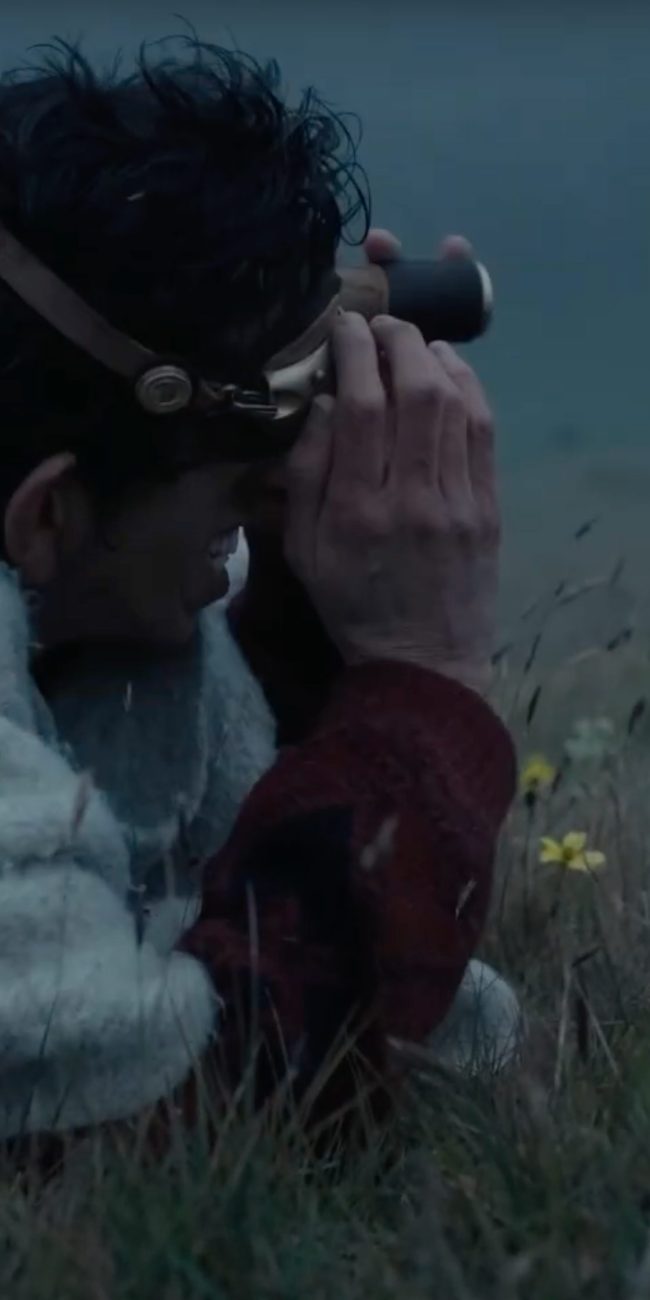A Conversation with Jeremy Workman (SECRET MALL APARTMENT)
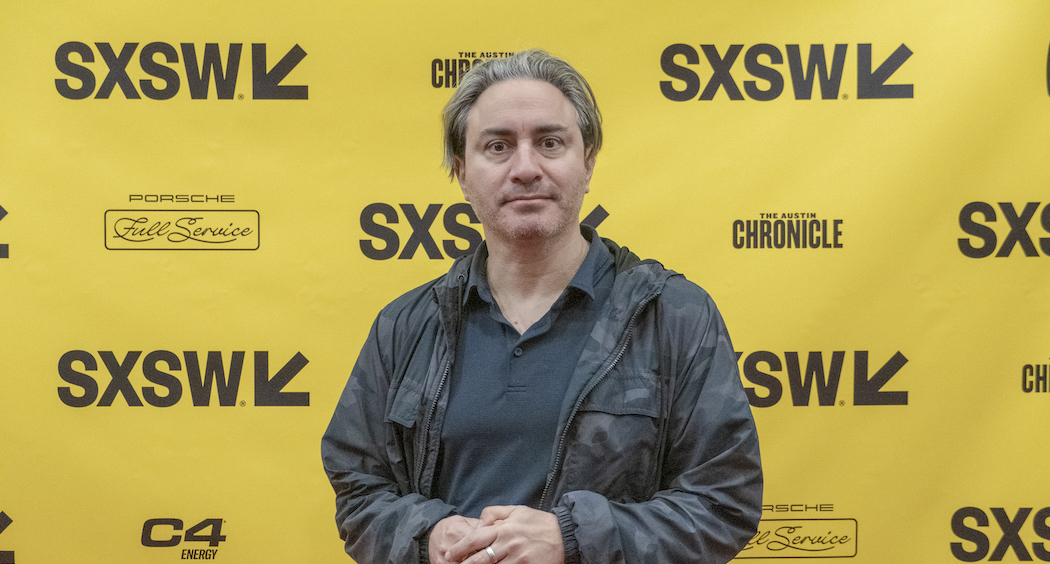
Indoor malls have seen better days, but at one point they were both filled with pedestrian traffic and often the hope of urban planners to revitalize ostensibly blighted districts. That’s how the folks in Providence, Rhode Island, thought of the late-1990s Providence Place Mall, built in the middle of town, part of an ongoing gentrification project that would destroy an artists’ community in favor of new condos. And where did those artists go? Why, into the mall, thank you very much, discovering a hidden space where they could furnish an entire apartment, away from the prying eyes of security. Such is the story told in Secret Mall Apartment, from director Jeremy Workman (The World Before Your Feet), who tells this fantastic narrative of cunning protest thanks to a prodigious archive assembled by the artists, led by a man named Michael Townsend, from 2003 to 2007. I met up with Jeremy at SXSW 2024, where the film premiered (and where I reviewed it), and here is a transcript of our conversation, edited for length and clarity.
Hammer to Nail: How did you come to hear about the secret mall apartment?
Jeremy Workman: It’s kind of bonkers. So, this story happened from 2003 to 2007. And from what I understand, and this goes back for like a decade, people wanted to make this documentary because the story was a kind of urban legend in Providence. It never really got super public, but it got some press when they got caught. And a number of people had been trying to make the documentary for a long time. So I feel really psyched and privileged that I got to make it. That’s just a little context.
So, I was in Athens, Greece, out there filming for Lily Topples the World, my last film. Lily is the domino-toppling superstar. And she was doing some cultural event with Ernő Rubik, the creator of the Rubik’s Cube, which is kind of classic Lily. And I was filming Lily and Ernő Rubik together, and the building was covered in incredible artwork made of masking tape. It was tape art. And it was amazing, with optical illusions and sunrises and sunsets. And I was like, “What the heck is this? Who is this?” And they’re like, “It’s that guy.” And they pointed to this guy and they’re like, “He’s an American. Go talk to him.” So I went and talked to him and we became fast friends and we hung out a lot in Greece.
HtN: And that was Michael Townsend.
JW: That was Michael Townsend, the star of Secret Mall Apartment. And we were like two Americans in the middle of Greece, both at this event for a while. And I think on the last night, maybe he was a little tipsy, I don’t know, he tells me this crazy story. And he wasn’t telling me because he was trying to see if there could be a movie here. He just told me, you know, this incredible story that happened. And then I didn’t believe it. I thought he was lying. I was like, “That’s bullshit.” And then he was like, “No, no, no.” And he pulls out his iPad and he gets onto the cloud and pulls down video of them bringing in furniture into the Providence Place Mall, sneaking in couches.
And I was like, “What the what?” And he showed me some footage and then he left and then I tracked him down in Providence and I was like, “We need to have a follow up conversation from that night.” And he and I then continued to have a conversation for several weeks and months about whether or not there could be a movie here to do a documentary. And over the course of several months, we got to the point where it was like, “Let’s do it.” And I think one of the reasons why he allowed me to tell the story—and he has now gone on the record in Q&As and stuff that he turned down 30 other filmmakers over the course of like 15 years—was that I was really interested not just in the secret apartment, but by this whole other side of what these guys were doing when they were in the secret apartment.
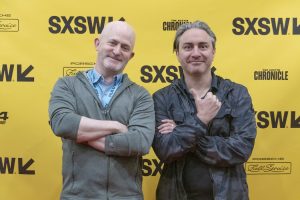
HtN’s Chris Reed and filmmaker Jeremy Workman
You know, they were building this crazy apartment in the mall, but they were also going in their every spare moment into hospitals and doing art in the children’s ward. They were doing 9/11 memorials. They were doing Oklahoma City-bombing memorials. And so there was this weird disconnect between this crazy apartment in the mall and what these artists were doing for no money, voluntarily, and putting so much energy into it. And I saw that connection between their art and the secret apartment and that became, I think, why they started to feel confident that I maybe had the right attitude, the right approach.
HtN: Right. And I really appreciate how you show that side of them, that altruism. So, as you pointed out, there is all this archival material from Michael Townsend. In fact, there must be a boatload of archival material because it was four years of filming. What was your process like of sifting through all that?
JW: They had these really crappy old cameras that they bought at Radio Shack; they spent $79 at Radio Shack to get this old Pentax camera that recorded in 320×240 resolution, 10 frames a second. They liked that one in particular because it fit in an Altoids case so they could put it in their pocket and then while they were in the mall whip it out and hold it and just film everything. They weren’t planning to do anything with the footage, which was also amazing. I was like, “Were you guys trying to make a movie with it?”
HtN: They’re installation artists, too, so that’s interesting.
JW: It’s so weird. Yeah. They wanted to record it for posterity and that’s part of the art, but they had no intention to share it publicly. And then they sat on this footage for literally 15 years and nobody saw it. Nobody. They didn’t even put it on YouTube or anything. There was 24 hours of footage, which sounds like a lot, you know, when you’re working on a documentary. And it was a gold mine, but it was actually not as much as I thought. I thought it was going to be like hundreds of hours.
So they had 24 hours of footage. And it also was only two years of the four years that they were in there. There was this moment in time that’s in the movie where they say they stopped filming and it was kind of arbitrary. All of a sudden they stopped filming. But for the first two of the four years, they filmed all of it. But their footage is amazing, as you saw. The coverage is great, the angles are great. They’re shooting with multiple cameras; they’re getting all kinds of stuff. There’s an incident with a security guard that’s wild. You’re just like, “Is this fake?” This has got to be faked.” And it’s not.
They were recording and there’s this incident where they had this run in with a security guard as they were bringing cinder blocks into the mall through the parking-lot door. And they were lugging in tons of cinder blocks to build a wall and a security guard stops them and they had a camera set in the back just covering a big wide shot. They had such incredible footage and I just didn’t want to screw it up. There was a part of this story that was like, for a filmmaker, “This is a layup, don’t blow it. Don’t get too cute. This is a layup, don’t blow it.” And that footage was so good. The process was that me and my editor, Paul Murphy—I co-edited it with Paul, and Paul was in Australia, and I was in New York—we would just go through that footage and just figure out how to build the story around it. And that became the spine.
HtN: When did you decide to add the additional element of the recreation of the apartment and build that set in Providence?
JW: I knew that I wanted the movie to be a little out there, a little bonkers, a little unorthodox, a little unconventional, a little ridiculous. I wanted all that because this is a story about people who snuck into a mall and built an apartment, so I felt like it needed the movie being in the same kind of brazen and bold and stupid element, you know? (laughs) And the other thing was that what I kept on hearing from them about the apartment was that it was not really an apartment; it was a kind of set for them. They said, “It was our set. We created a stage to make a fantasy world. It was like a movie set.” So they were constantly saying that to me. And then lastly, as I mentioned earlier, they stopped filming. So there were two years of all kinds of plot points, if you will, that were not captured on film. So suddenly with all that, I was like, “Oh, okay, we’re going to do this thing where we build a replica of it and we’re going to kind of recreate those scenes.”
HtN: Including the bust.
JW: Including the bust where they got in trouble. Because obviously you’re watching this documentary and you’re like, “When are they going to get busted? How are we going to see this?” So that became built towards that. And then it also offered a way for the movie to be kind of meta and invite the subjects to be part of the creation of the movie a little bit, which I thought was also really important because it was like they’re artists and they were watching the process of the building of the apartment in the mall. So we should also sort of feel the process of the building that’s happening, of the documentary. And then an idea related to that also was this other scene that we had where a character builds a model of the mall and we watch that being built. And then the model is then used to help us understand where the apartment was.
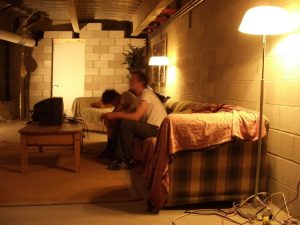
A still from SECRET MALL APARTMENT
HtN: Right. I like the model that he built. So, where did some of the other material come from? Your film is made up of the archival shot by Townsend and his crew, the interviews that you do in the present, and the recreation. And then you’ve also got some other archival from way back, like the stuff from the ‘90s about gentrification.
JW: So the movie has all these different strands and strains and stuff. And that whole story about gentrification happening in the ‘90s, which is when the mall came in and totally decimated this area behind the mall where they all lived, all that footage was recorded by people that were there. And there was incredible stuff where they’re at City Hall and within Fort Thunder, which was this art collective.
HtN: And it’s now what? Condos, right?
JW: It’s condos, yeah. Where Fort Thunder was, it’s like an ATM kiosk. And this person who was there, Raphael Lyon, who is a musician and a photographer and an artist, he recorded a lot of Fort Thunder and provided that. Oh, and here’s another interesting detail on some of that footage. There’s a filmmaker, Sam Cullman, who has made some great documentaries; he did one called Art and Craft, and he was involved in If a Tree Falls, and he’s just a great documentary filmmaker. He had gone to Brown in the late ‘90s and his senior film for his class was on the Providence Place Mall.
And he went into the Providence Place Mall interviewing people about the mall, and he got a lot of people talking about how they didn’t think it was such a great thing for Providence, and that it was this kind of divisive place and it kind of separated neighborhoods. And it seemed like City Hall was catering to rich suburbia and people from Boston and they had forgotten the people in Providence. And so that was perfect to use.
HtN: I’m really interested in the way your film addresses questions about the purpose of art in this world, and if it even should have a specific purpose, and what it means to those who create it and to those who perceive it. What are your hopes for people watching your film to take away about the purpose of art?
JW: You know, this is a big question that I was really fascinated with because here are these people and it was so hard to even put your finger on what they thought about it. It’s temporary, it’s meaningful, it’s interactive. The film is about art as process, art as an experience, not as a finished product. It’s bringing people together with art, it’s community as art. And that’s what you see with them going into these schools and going into hospitals, and I think the movie does this weird thing where the movie now stands as some sort of artwork that’s in relation to what they’re doing. And what the movie’s doing is mostly raising questions in a way, as opposed to giving a lot of those answers about what art means.
But there’s a scene at the end of the movie where a lot of people are just like, “Is it art, the secret apartment? What is it? Does this make it art?” And I found that scene really fun to do and really interesting because it hits on so many of these points. You know, is art something that is private? Is it public? Does it exist on a wall? Does it need to be in a museum? What if it’s just this snarky middle finger to the establishment? Can that be art? So there were just all these cool questions and I thought that everything about the secret apartment addressed them but didn’t answer them.
HtN: And that is a perfect note on which to end! Thanks for chatting with me, Jeremy. I wish you all good things with the film.
JW: Thank you!
– Christopher Llewellyn Reed (@ChrisReedFilm)
2024 SXSW Film Festival; Secret Mall Apartment, Jeremy Workman

